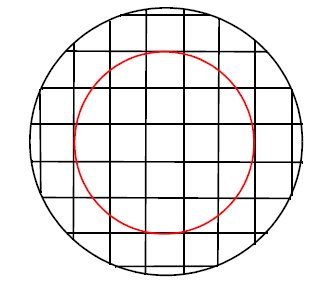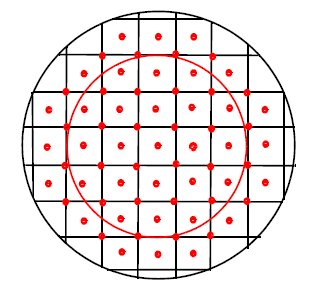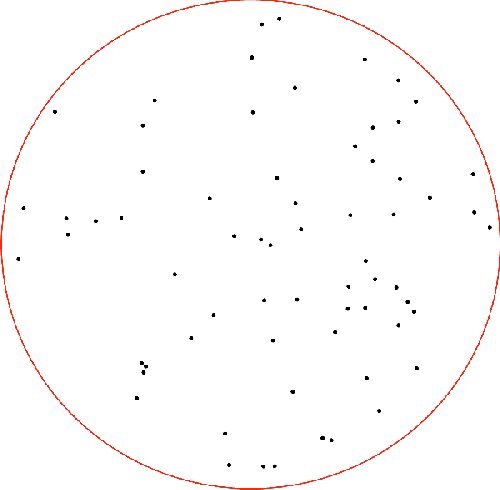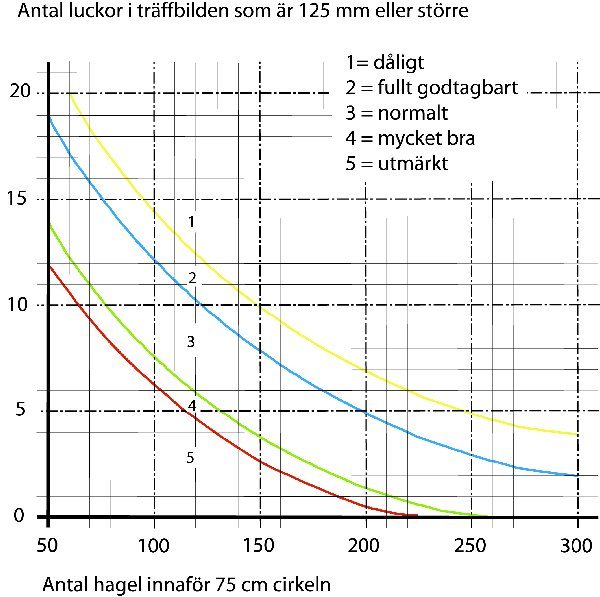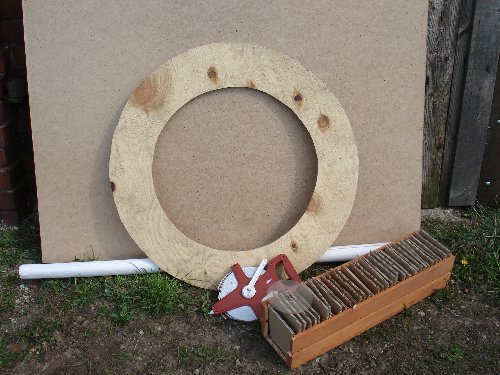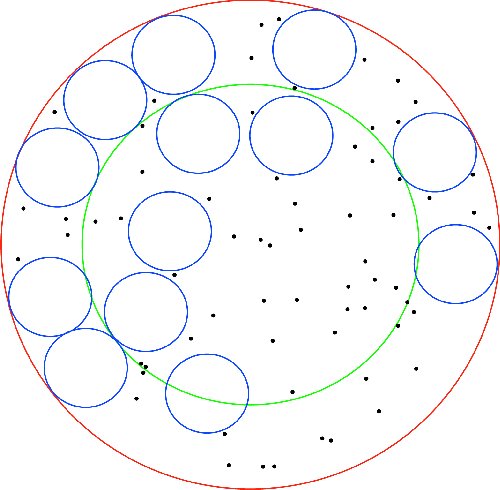|
|
|
How to evaluate pattern - some physicsIf we now take a 75 cm circle and place a 50 cm circle in that we get two circles. And then we have as uniform coverage of pellets as possible in both. And this is where we find the first paradox: the weapon that collects most of pellets in the 50 cm circle, have the same choke as that will spread the same number of pellets from the same cartridge evenly over the two circles. For obvious reasons, it is the weapon that gives the most even hit rate that is easiest to hit with. As for the choke, there is an upper limit; it is difficult to pass over 75-80% in the 75 cm circle at 35 yards no matter much you try. But what determines how easily you hit is how evenly distributing the pellets. To collect 75% of pellets in the inner circle of 50cm does not give a higher degree of choke higher than if you spread them out over the 75cm circle, but it lowers the hit rate of the effective area by around 50%.
A 75cm and a 50cm circle with a grid of 10x10 cm plotted How do you measure how good or how bad a pattern is?The easiest and most intuitive is that strive to have as equal number of pellets in the two circles. But even this gives us an opportunity to compare a good hit rate with a worse. The method I prefer is a bit simplified version of Oberfell & Thompson's method involves calculating the number of "holes" in the hit picture. What one must do is to count:
Number of holesBy choosing the smallest area that represents a target, usually a circle of 125 mm with an area of 0.6 dm2, you can define how good the pellet distribution over the circle is whatever shot size, choke or the number of pellets when this surface corresponds to a grouse or woodcock, which we can assume is our smallest game. Distribute pellets optimally; you need only 69 pellets to cover the 75cm circle.
A hit image free from gaps of 125mm circles requires only 69 pellets. But now it is an optimal allocation that has probably never been seen in reality.
In reality, however, 70 pellets is too little to cover the entire surface. 28gram US3 in half choked barrel that add up to ½ choke with this cartridge. But to what can this hit picture be used? And how good is it? To achieve full coverage, ie no holes greater than 125mm requires just below 70 pellets distributed quite evenly over the 75 cm circle. The holes must not be touching each other or extend outside the outer circle. Usually the bulk of pellets ends up inside the 50 cm circle. For the same reason is likely that the majority of the circles centers that fall between the outer and the inner circle. If one calculates the number of pellets in the inner circle and the number in the outer one can calculate: the number of pellets in the inner circle divided by the number of pellets in the outer circle which gives us a value on how well the pellet distribution fills the 75 cm circle. The area is fairly equally between the two circles, about 20 dm2. The assessment of the pellet distribution is based on the chart below. This has been compensated for pellet size size and number of pellets in the pattern. If one uses 36 grams US7 which has about 416 pellets in the cartridge that gives with 1/2 choke approx. 60% within 75 cm circle, it will be about 250 pellets in the 75cm the circle. Obviously there will be fewer gaps in the hit picture than if you shoot with 32 grams of US3. This allows us to compare different patterns with each other even if they themselves contain different number of pellets in the cartridges.
Practical testSo how do you do in practice? Well you measure out the distance to exactly 35 m, looking up sufficiently large cardboard (at least 1.2 x 1.2 m) and shoots. The analysis of the shots requires a 75cm circle of plywood with a 50cm circle sawn out inside. As a measure of the 125mm circle can be suitably used plastic disc that lies at the bottom of a CD spindle, or an old CD. The CD gives a slightly smaller circle than 125mm (a CD is 122mm), but the small difference is usually not more than max one circle in the hit picture, and we are now dealing with a total average of three to five rounds so one or two odd mm does not do much difference. However, it is important that the distance between weapon and board is exactly 35 meters.
All that is needed: a plywood circle, an old CD or a transparent plastic tray from a CD spindle and a measuring tape. Requirements on the patternSome recommend that one should not hunt small game with ammunition that gives more than five circles in the pattern, but I think this is to make simplifying a bit too rough. But the natural way, you want as effective and even hit pictures as possible.
Gyttorp Red 28 grams US3 at half choke, many holes, but hit the pellet distribution is perfectly normal - 13-holes and a total of 64 (31 + 33) pellets. This is the same example as in the beginning. And it's no good at smaller game than the fox at that distance. Now, we can produce good or bad result images and measure the pellet density (the amount of pellets in our 75 cm circle). The choke effect, you can read about here.
Copyright 2011 © shotguns.se Last update: 2011-08-24 |
